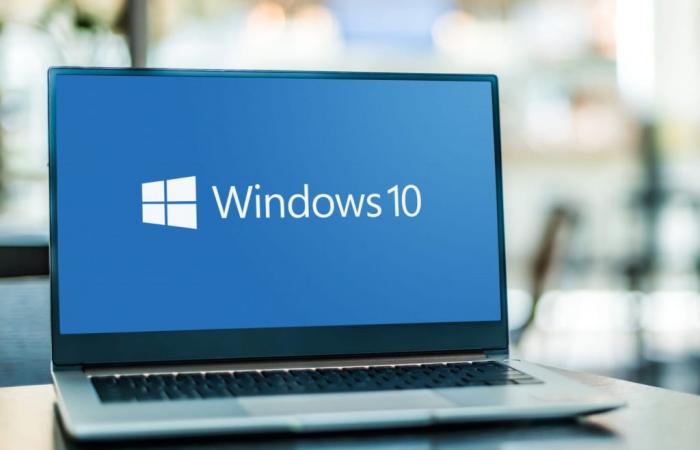Microsoft has finally announced the prices of the extended security maintenance program for Windows 10. Traditionally reserved for businesses and administrations, this time it will be accessible to individuals.
Windows 10 is entering its last year of official life through updates. After October 14, 2025, the operating system will no longer receive any functional new features, nor bug fixes or security vulnerabilities. Continuing to use the OS beyond this date is therefore strongly discouraged, for obvious security and stability reasons.
For users with a compatible PC, they will therefore have to migrate to Windows 11, if they have not already done so. And for owners of a computer deemed “incompatible”, they will either have to force the upgrade to Windows 11 using a method of circumventing the hardware requirements imposed by Microsoft, or switch to another operating system (such as a Linux distribution), or buy a compatible PC, new or used.
However, as at each end of life of a generation of Windows, Microsoft is setting up an Extended Security Updates program, or ESU for Extended Security Updateswhich will allow you to continue using Windows 10 safely after October 14, 2025. This program, of course paid, is normally reserved for professional users. But this time, Microsoft has decided to open it to individuals, for a fee.
End of life of Windows 10: a maintenance program extended to individuals
If the existence of the ESU program for Windows 10 and its opening to individuals had been announced for several months already, we now know the outlines and the prices in dollars, the prices in euros having not yet been communicated. For professionals, Microsoft therefore offers extended maintenance for three years, at an increasing annual rate: $61 the first year, $122 the second and €244 the third and final, per machine obviously.
A high price, especially since it is a priori cumulative, that is to say that you will have to pay the sum of the years spent if you join the program during the course. Fortunately, Microsoft has planned a much lower price for schools, which will have to pay, per computer, $1 for the first year, $2 for the second and $3 for the third.
For individuals, however, the extended security updates program will be a little different: it will only cover a period of one year, against a one-time payment of $30. For the moment, Microsoft has not communicated on its possible extension beyond this duration, nor on an increase in its price over time.
Even if this price is low at first glance, it is difficult to see the benefit. Windows 10 is doomed to disappear after ten years of good and loyal service, and paying a few tens of euros to extend its use for a year is of little interest, apart from a few very specific cases which only concern fleets professional machines.
Paying for this maintenance extension seems all the less justified as the program will only cover security updates, and will not bring absolutely any new features or functional improvements. For the “unfortunate” owners of a PC not compatible with Windows 11, the best solution will undoubtedly remain to force the update by tricking, to adopt a new operating system or to resign yourself to investing in a new computer. Let us remember, for all practical purposes, that Windows XP and Windows 7, two of the most popular versions of Microsoft’s system, had much shorter lifespans than Windows 10, which still lasted ten years. It’s time to turn the page.






